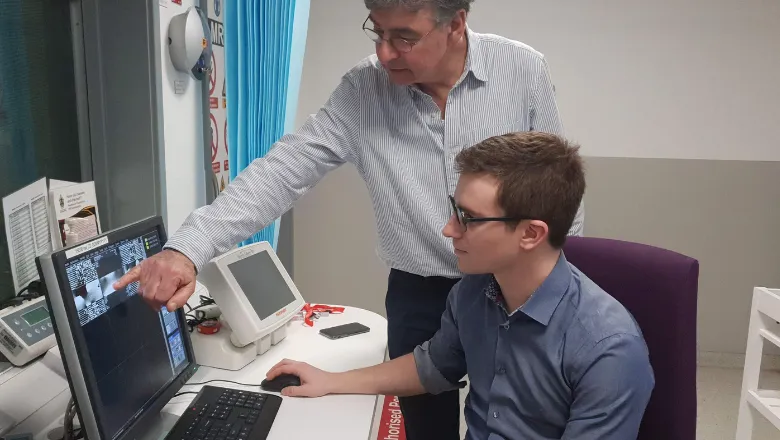08 April 2019
Developing an MRI method that allows the use of metal guidewires for cardiac inventions
A team from the Department of Biomedical Engineering is developing an interventional magnetic resonance imaging (MRI) tool that aims to allow the use of metal guidewires and catheters for cardiac inventions.

A team from the Department of Biomedical Engineering is developing an interventional magnetic resonance imaging (MRI) tool that aims to allow the use of metal guidewires and catheters for cardiac inventions.
Metal guidewires and catheters are typically used for x-ray procedures, but MRI requires the use of radio-frequency (RF) fields which can induce electrical currents in these conductors, causing tissue heating in the patient. Non-metal implements such as plastic or fibreglass guidewires, and plastic catheters have been developed as alternatives (though while this is a growing area these materials can lack the mechanical stiffness and flexibility that comes from using metals).
The project, called ‘System Level Safety’, takes the alternative approach of allowing conductors to be present during MR image acquisition by using a unique method called ‘parallel transmission’, a standalone system of an array transmit coil with multiple separate transmitters that can interface with a normal MRI scanner while being controlled in real-time to identify and cancel any currents on the metal wires. The team is currently testing this approach within normal imaging sequences, and aims to conduct preclinical tests in upcoming months. If successful, the team will continue to work towards clinical testing. As well as enabling interventional MRI, the same technology may prove to be useful in addressing the increasingly important challenge of imaging patients with metal implants in their bodies.
The core technical team includes Felipe Godinez, Shaihan Malik, Jo Hajnal, Ozlem Ipek, Nuno Teixeira and on-site Siemens scientist Raphael Tomi-Tricot who has joined the School to work on the new 7T system. The team has also received clinical input from Reza Razavi, Kuberan Pushparajah, Phuoc Duong, John Whittaker and Rahul Mukherjee, as well as support from Siemens and Rapid Biomedical. The project is funded by the Medical Research Council.
